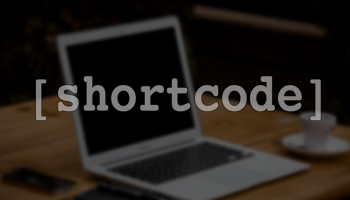What To Do When You Are Locked Out of WordPress Admin (wp-admin)
![]() This past weekend, we had a user who was locked out of WordPress Admin panel of their site. While we had written numerous articles covering each specific issue, we realized that we should combine all of them at one place to make it easier for others. In this article, we will show you what to do when you are locked out of WordPress Admin (wp-admin), so you can regain access to your site.
This past weekend, we had a user who was locked out of WordPress Admin panel of their site. While we had written numerous articles covering each specific issue, we realized that we should combine all of them at one place to make it easier for others. In this article, we will show you what to do when you are locked out of WordPress Admin (wp-admin), so you can regain access to your site.
There are few reasons why you could be locked out of WordPress admin, so let’s take a look at each of them one by one. Hopefully through this process of elimination, you will be able to figure out the solution for your problem.
Error Establishing Database Connection
Are you seeing this error on your entire site? The reason why you get this error is because WordPress is unable to establish a database connection. This could happen for various reasons. It could happen if your database got corrupted for some reason. It could happen if your web hosting server is having some issues. If this is your issue, then please refer to our guide on how to fix the error establishing database connection in WordPress.
White Screen of Death
Are you seeing a white screen on your WordPress admin? This issue is often referred to as the WordPress white screen of death. It usually happen because you exhausted the memory limit. It could be caused by a poorly coded plugin or theme. It could also be caused by unreliable web hosting. If you are seeing this error, then please refer to our guide on how to Fix the WordPress white screen of death.
Incorrect Password Issue
Sometimes, even when you are typing the correct username and password combination, you won’t be able to login. When you try to reset your password, you never receive the email. This can happen if you were a victim of a hack. We would recommend that you reset your WordPress password from phpMyAdmin.
This method can be a bit overwhelming for new users, but this is your best bet.
Lost Admin Privileges
Sometimes, you may be able to login to your WordPress admin, but you don’t see any of the admin functionality. For example, no plugins, no themes etc. This could happen if your user permissions were modified. Often this happen due to a hack. Hackers would infect your site, and then delete your admin privileges. In this case, you should add an admin user to the WordPress database via MySQL (phpMyAdmin).
PHP Errors (i.e Syntax error, unexpected function etc)
These PHP errors usually happen when you are pasting the code from a website. Often beginners use the built-in WordPress editor from their dashboard. While that feature is pretty handy, but if you don’t know what you are doing, then it can be a disaster. If you pasted a code from a website which locked you out of your WordPress admin, then the first thing you need to do is take a deep breath. Now the only way to fix this issue is using a FTP program (How to use FTP). Once you have installed the FTP program, login to your site. Go to the theme file that you modified. Most likely it was the functions.php file. Now get rid of the code that you added in there. Re-upload the file, and you should be good to go.
Before you go on the site and comment “this code broke my website”, please refer to our beginner’s guide to pasting snippets from the web into WordPress. This is just to prevent you from looking like a fool on the web. Often its hard to admit that the mistake might be yours, so make sure of that first before you point the finger at someone else.
Hopefully after going through all of these possible scenario’s, you have already fixed your site. If one of these solutions helped fix your issue, then please let us know in the comments. If you have a solution that is not mentioned in this article, then please share it in the comments as well.
Source: wpbeginner.com
 Minimum Word Count
Minimum Word Count